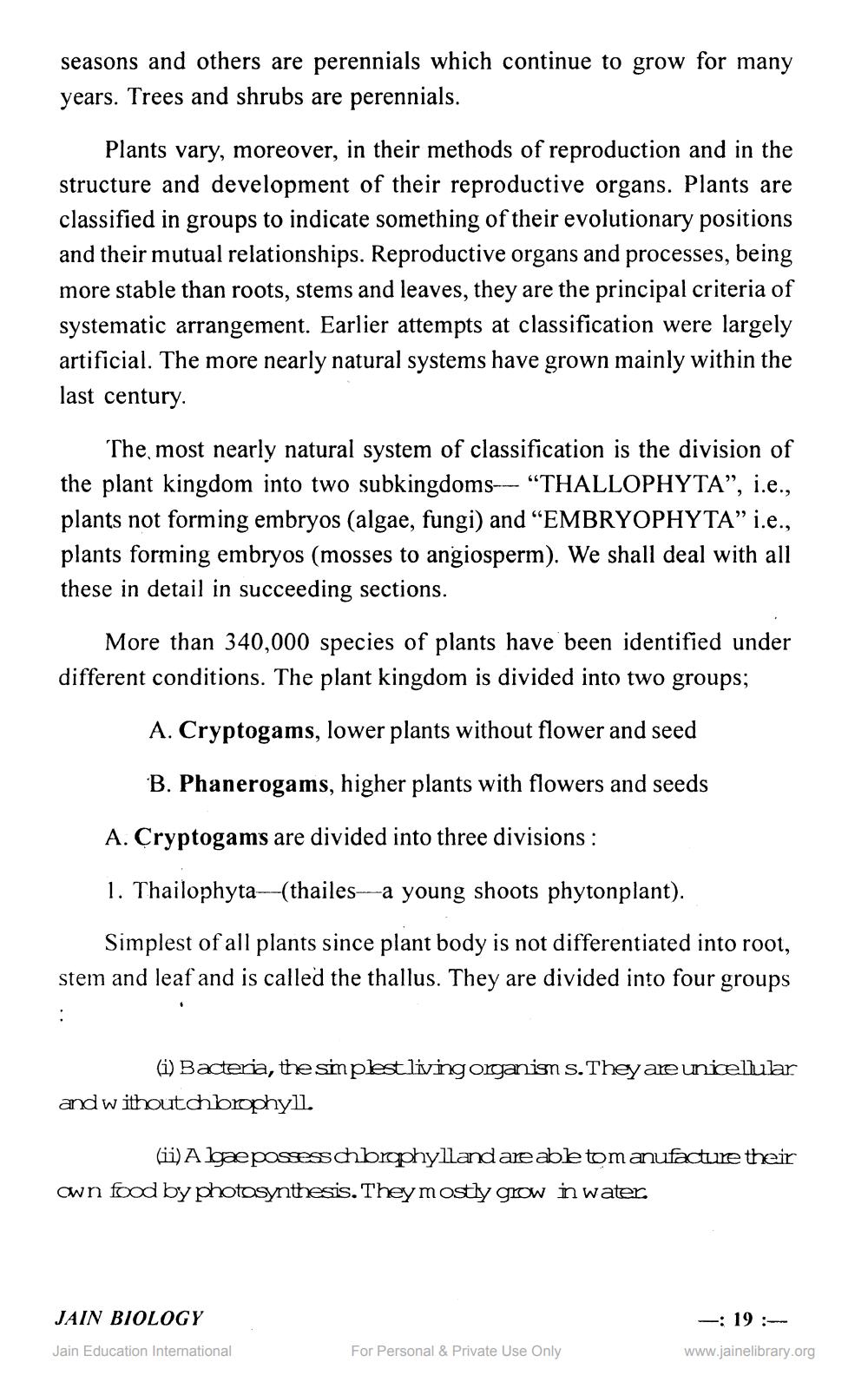________________
seasons and others are perennials which continue to grow for many years. Trees and shrubs are perennials.
Plants vary, moreover, in their methods of reproduction and in the structure and development of their reproductive organs. Plants are classified in groups to indicate something of their evolutionary positions and their mutual relationships. Reproductive organs and processes, being more stable than roots, stems and leaves, they are the principal criteria of systematic arrangement. Earlier attempts at classification were largely artificial. The more nearly natural systems have grown mainly within the last century.
The most nearly natural system of classification is the division of the plant kingdom into two subkingdoms-- "THALLOPHYTA”, i.e., plants not forming embryos (algae, fungi) and “EMBRYOPHYTA” i.e., plants forming embryos (mosses to angiosperm). We shall deal with all these in detail in succeeding sections.
More than 340,000 species of plants have been identified under different conditions. The plant kingdom is divided into two groups;
A. Cryptogams, lower plants without flower and seed
B. Phanerogams, higher plants with flowers and seeds
A. Cryptogams are divided into three divisions :
1. Thailophyta—(thailes-a young shoots phytonplant).
Simplest of all plants since plant body is not differentiated into root, stem and leaf and is called the thallus. They are divided into four groups
(1) Bacteria, the simplest living organism s. They are unhellular and withoutchbrophyll.
(ii) Algæpossesschbrophyllandare able tomanufacture their own food by photosynthesis. They mostly grow in water.
JAIN BIOLOGY
-: 19:
Jain Education International
For Personal & Private Use Only
www.jainelibrary.org




